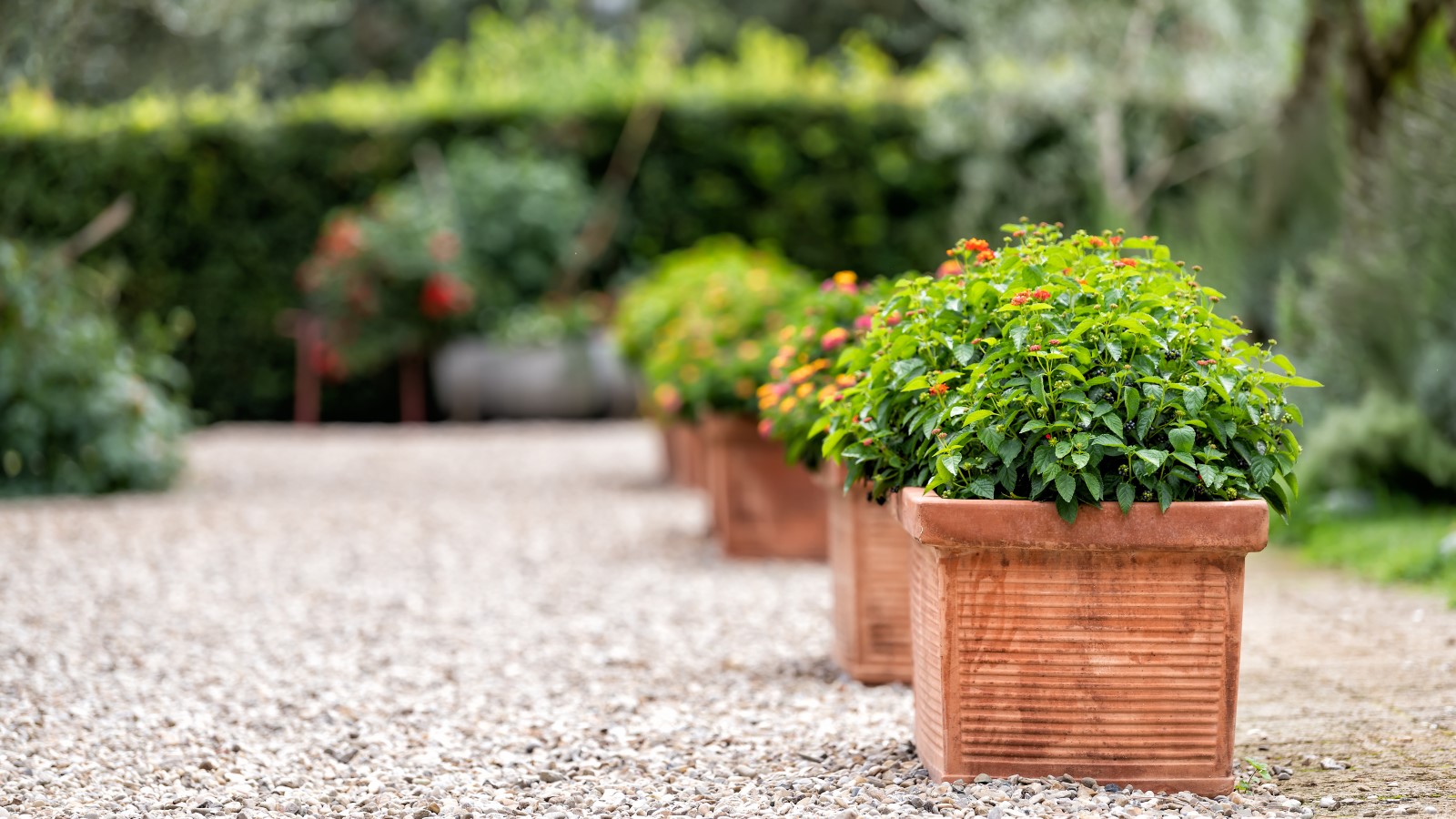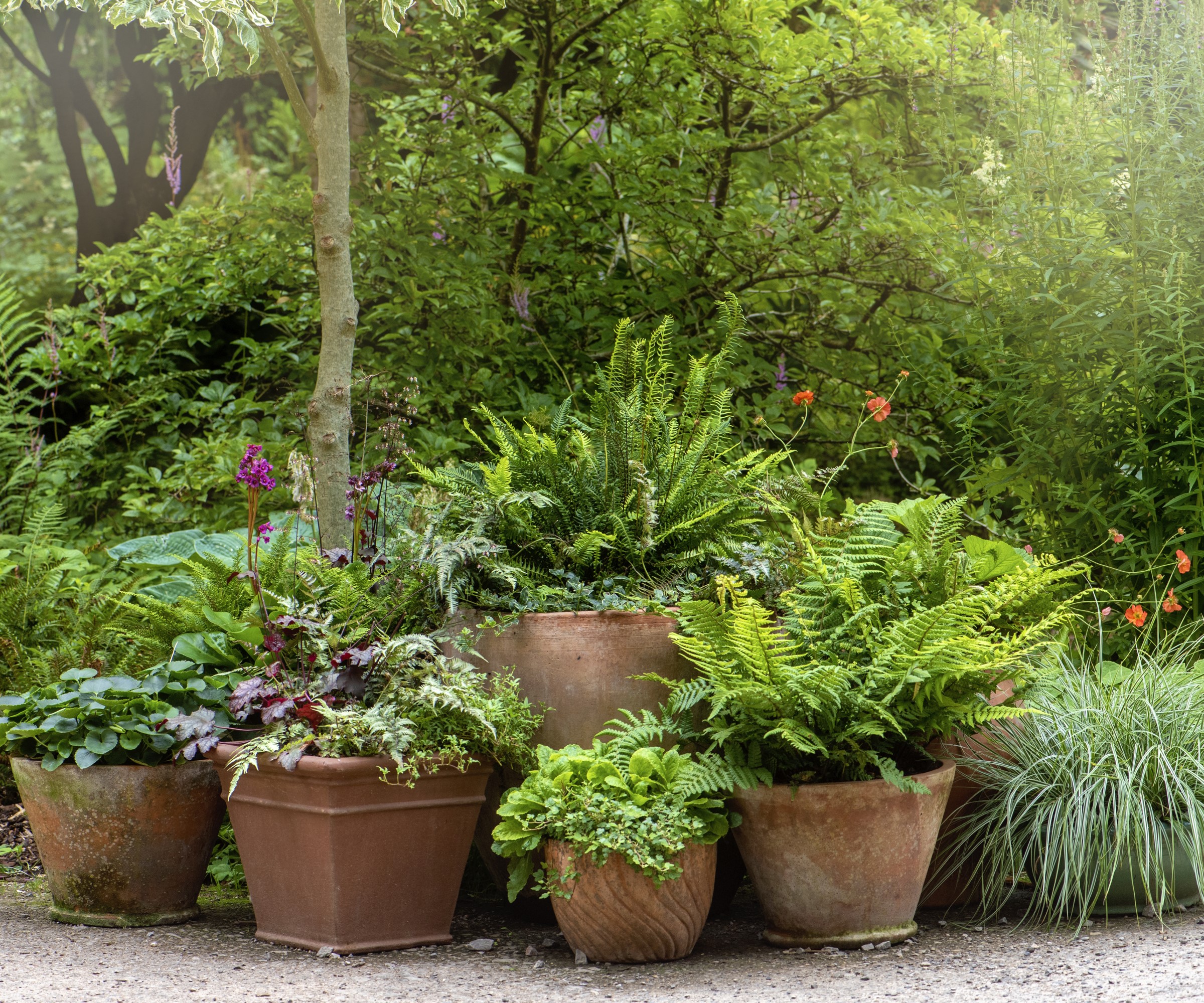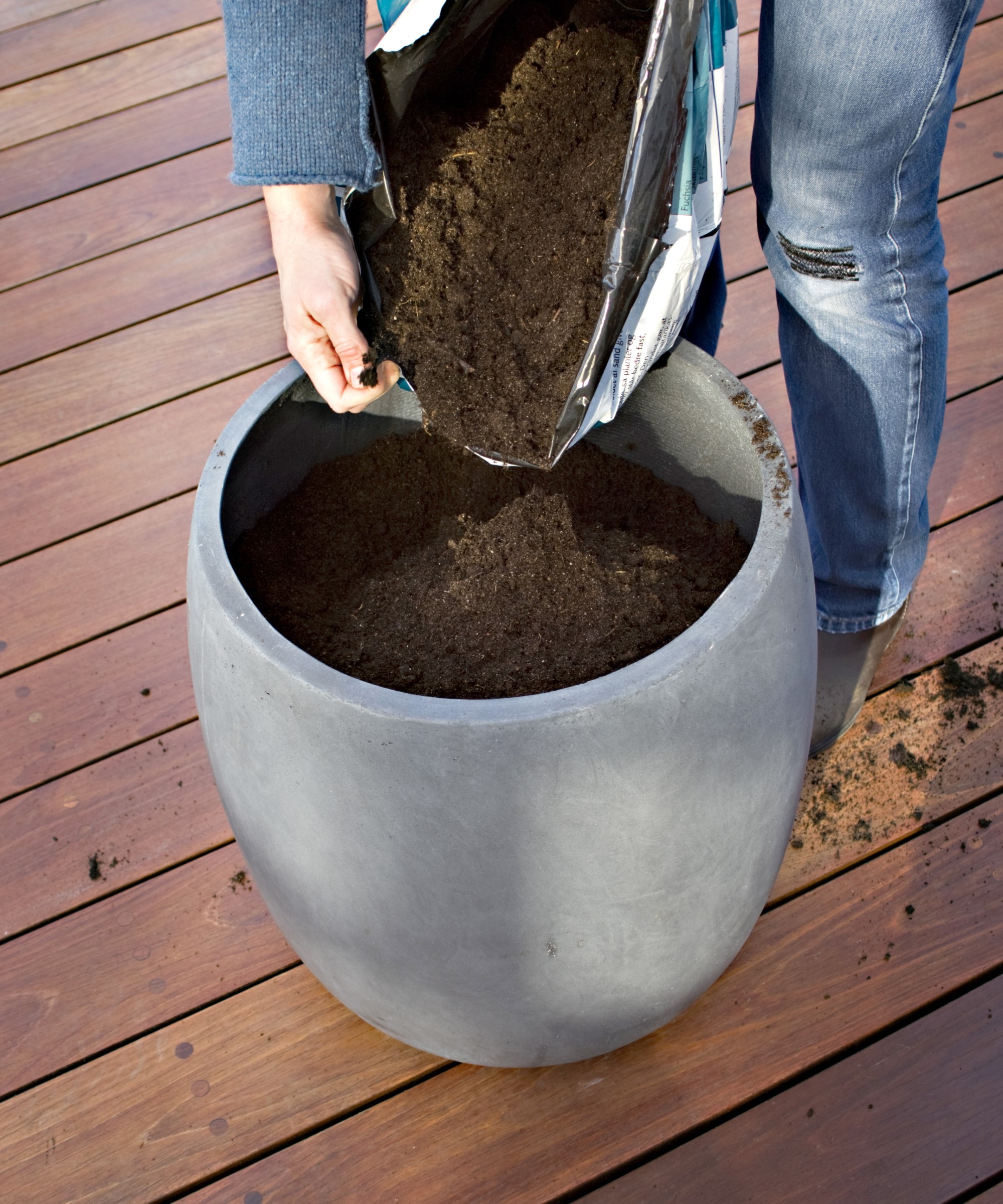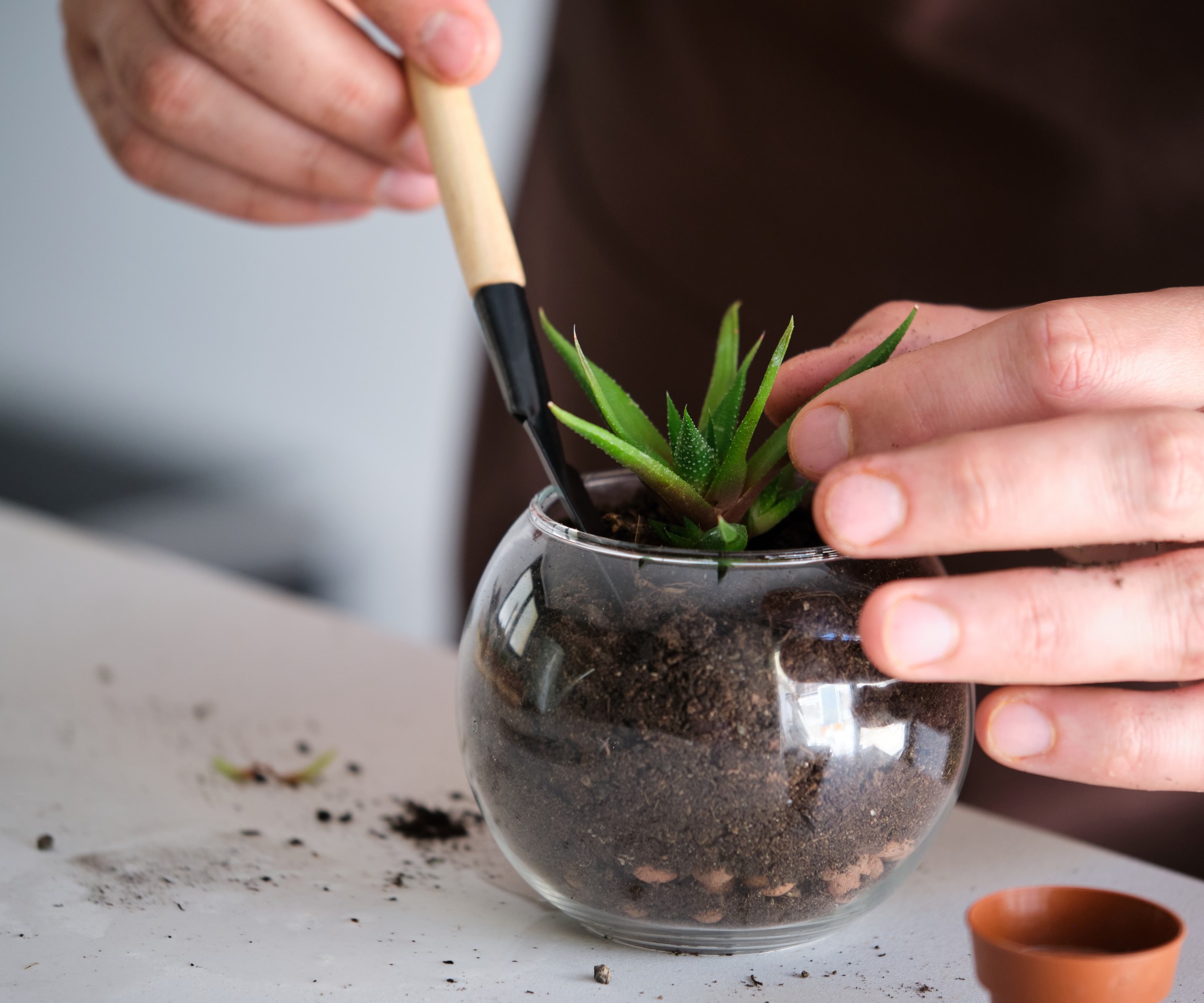
Drainage is a hugely important element for growing any plants in a planter or container. If there is nowhere for excess water to go, then it can pool in the bottom of the planter and ultimately kill the plants.
Every planter must have holes in the bottom for that surplus of water to drain out from and those holes need to be kept unblocked and able to flow. The likes of broken pots, stones, or more unusual household items can be utilized in the bottom of planters, though care needs to be taken to ensure they do not affect the water getting to and out of the drainage holes.
Watering when container gardening can be tricky to master. Early in my professional gardening days I looked after all the pots and planters around the world-famous Hidcote Manor Garden in the UK for a season. They ranged in sizes, they ranged in water requirements, and they housed a lot of important plants – it was daunting. However, when it comes to watering any planters, if you have got the drainage right it gives you peace of mind that excess water will flow out and not potentially kill your plants.

What to put in the bottom of a planter for drainage
Easily the most important thing to put in the bottom of a planter for drainage is holes. Every pot, container, trough, or planter needs drainage holes. A failure to think about correct drainage is a common container gardening mistake and it will lead to plant death.
Ruth Hayes, gardening expert for Homes & Gardens, warns backyard gardeners that ‘if not provided with adequate drainage, the compost in containers can quickly become waterlogged’.
‘Waterlogging forces the air out of the compost so in effect the roots "drown" in the excess water, eventually killing the plants,’ she adds. The limited airflow as a result of a build-up of moisture in the pot can also lead to fungal growth and root rot.
Many pots or planters will come with drainage holes, however it is not always the case. Make sure to check any outdoor planters and add holes using an electric drill if required. While plastic and wood planters should be simple, particular drill heads may be needed for ceramic or metal planters. You can get a Drill and Driver Multi-Bit Set at Amazon with heads for many materials.
Even with drainage holes it can be beneficial to add extra materials to the bottom of a planter. For many years gardeners have used broken old bits of terracotta pots to place over the drainage holes. These are known as ‘crocks’ and they cover the drainage holes to stop compost blocking them and ensure excess moisture when watering plants can flow out the holes.
Gravel or stones can also be at the bottom of a planter, but only to thinly cover and protect the drainage holes and not as a thick solid layer. A thick layer can reduce the space for plant roots and also potentially raise the water table in the pot, which can increase the saturation of the soil around plant roots. It is also important to ensure that any stones are not sitting over the drainage holes on flat edges that can block them.
Sharon Harding, a gardener of 40 years and founder of Backyard Addict, reiterates that while adding a layer of gravel or rocks at the base of plants ‘was once a common practice, many gardening experts now advise against it’.
‘If you fill a pot with well-draining potting soil, any excess water will naturally percolate through and drain out,’ she adds. ‘The water doesn't drain well if you put a layer of gravel or rocks at the bottom. When the water encounters the bottom layer, it moves sideways along that layer and collects. This causes water to pool, and the plant roots will not develop properly.’
It is also important to raise the planters up on feet, to create space between the planter and the ground. This will allow excess water to drain out of the holes and prevent dirt or debris blocking the important drainage holes. An example of such feet for pots or planters is the UFelice Invisible Pot Feet available at Amazon.

What to put in the bottom of a large planter for drainage
If you have a large planter or planter box then it may require lots of drainage holes, or larger holes that need covering. To avoid adding even more weight to what will become a very heavy planter when full of soil, there are lightweight options for helping drainage.
Ruth Hayes recommends saving polystyrene packaging as ‘it can be broken up and used as lightweight container crocks’. In addition, the likes of milk jugs, crushed cans, or plastic drink bottles can all fill the bottom section of a large container. This will reduce the overall weight, while also stopping soil from blocking the drainage holes.
If there are concerns about compost finding their way down to the drainage holes and potentially blocking them, then the likes of newspaper, fabric, paper, or even coffee filters can be used to line the base of the planter and give a protective cover to the holes.
What to put in the bottom of an indoor planter for drainage
Whether plants are outdoors or indoors, proper drainage is important for plant health. Many of the same items as mentioned elsewhere in this article can be used at the bottom of indoor planters. It is important to remember when caring for houseplants to place saucers underneath indoor planters to catch the excess water that runs out of the drainage holes.
Anne Swithinbank, gardens expert for Homes & Gardens, does offer an alternative and says: ‘Although we’re always told that pots need drainage holes, many indoor gardeners plant into watertight containers. I’ve been growing the rhizomatous fern Davallia mariesii in a decorative glass vase, succulents in a ceramic bowl, and Peperomia puteolata in a small urn successfully for four-five years.’
When there are no drainage holes in such planters, a layer of stones or pebbles - such as the Natural Polished Mixed Color Stones available at Amazon – is commonly used as a water reservoir. The excess water flows into the spaces between these stones and away from the soil. However, it is recommended that anyone using planters without drainage holes in this way only waters sparingly and slowly, being very observant not to add too much water.
Vladan Nikolic, a houseplant expert and founder of Mr Houseplant, adds: ‘You have to carefully control how much water you pour to avoid oversaturating the soil. If you use a porous and well-draining potting mix, enhanced with large-particle amendments, there’s no need to put anything at the bottom of the container.’

Never underestimate the importance of drainage holes in planters and making sure those holes are protected from blockages. Without putting crocks or something else in the bottom of a planter to guard those holes, they can easily get blocked by soil and then will not do their job.
Whether you are putting together a spring planter, fall planter, or even a herb planter – it is imperative to check every planter for holes, and make holes if required. It can be easy to assume there's holes there, only to discover the reality when your plants start to look unhappy.







